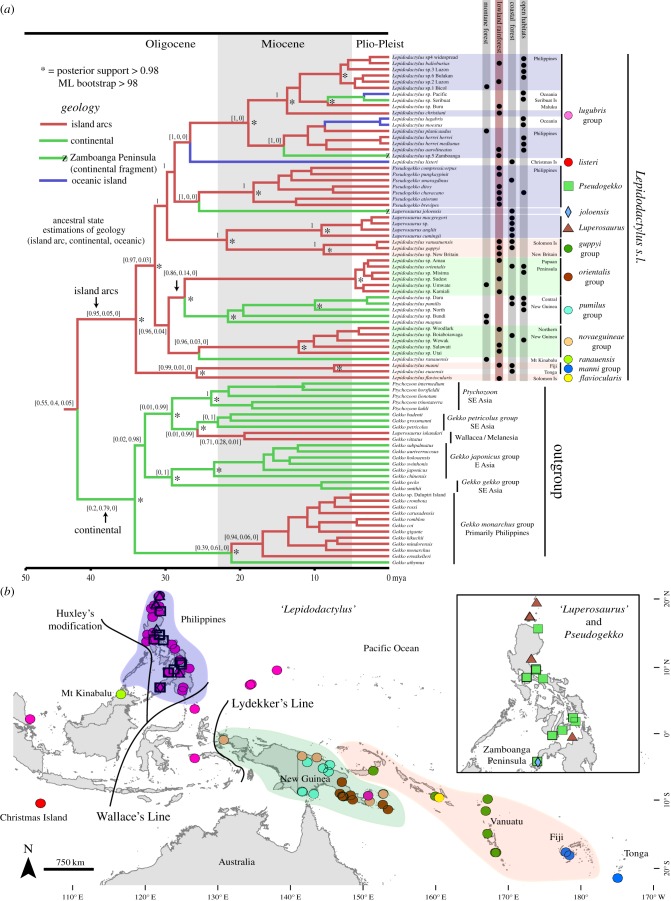Figure 1.
(a) Detailed chronogram for Lepidodactylus s.l. and outgroups, * = Bayesian support >0.95, branches coloured according to ancestral state estimation of geological origins of landmass and ancestral states probabilities shown in brackets at major nodes (island arc, continental, oceanic). Clusters of taxa concentrated on key regions with arc origins are highlighted: Philippines (blue), New Guinea (green) and East Melanesia (red). Taxa currently placed in Lepidodactylus s.s. are indicated by circular symbols, other ‘genera’ by squares, diamonds or triangles. Summary of habitat types based on field observations and published literature. (b) Localities for the 12 major lineages of Lepidodactylus s.l., excluding samples of the globally distributed, anthropogenically dispersed parthenogen Lepidodactylus lugubris. Major regions with arc origins are highlighted as per tips of phylogenetic tree: Philippines (blue), New Guinea (green) and East Melanesia (red).

